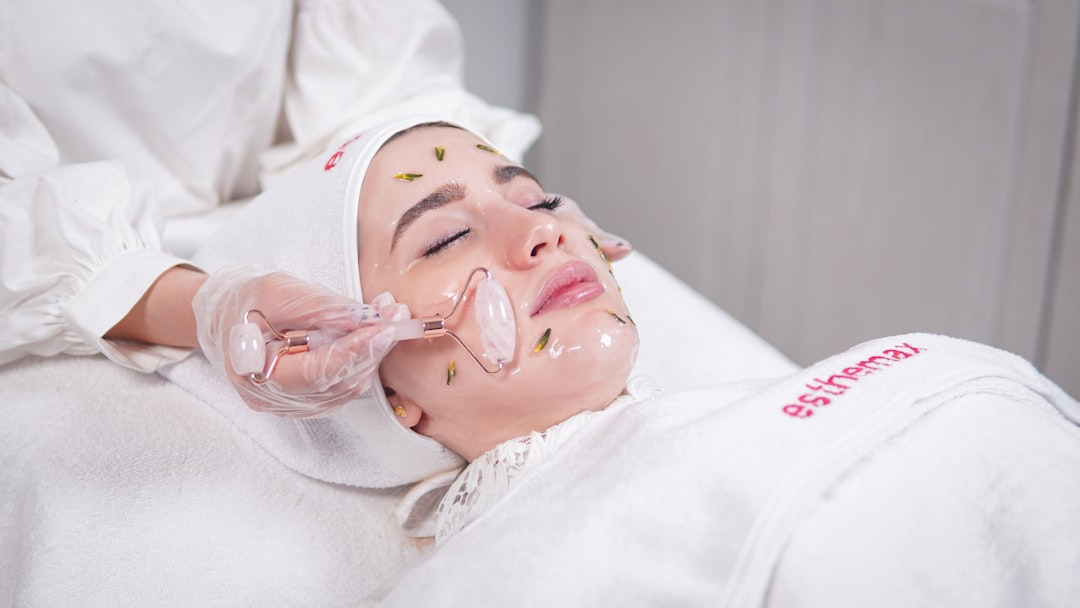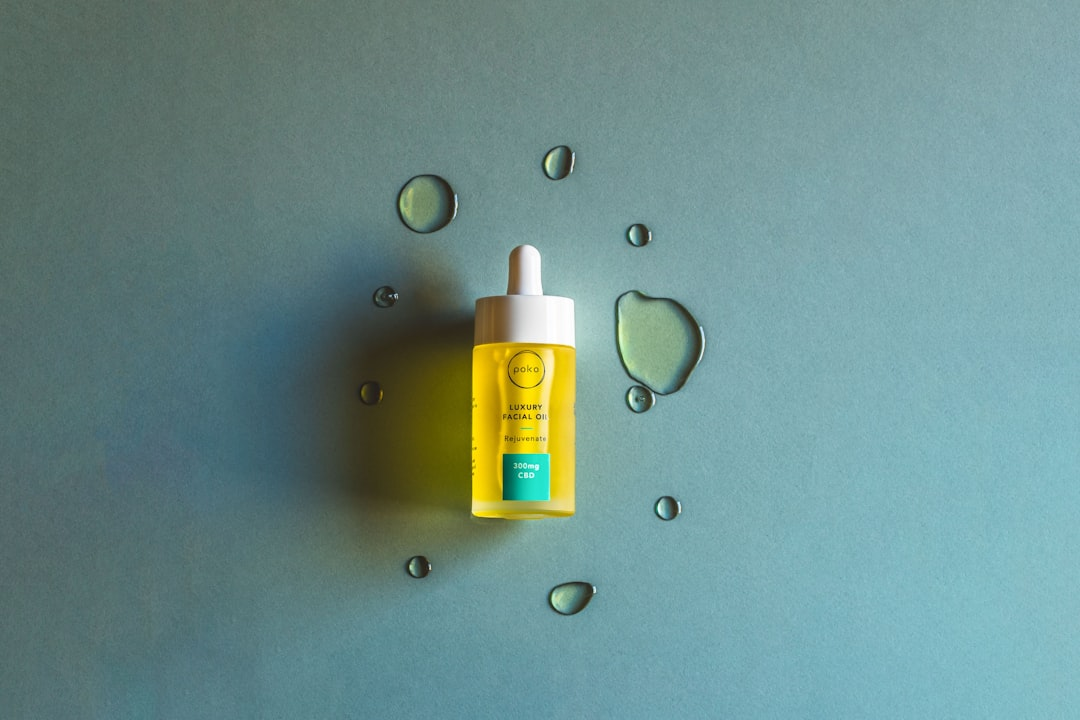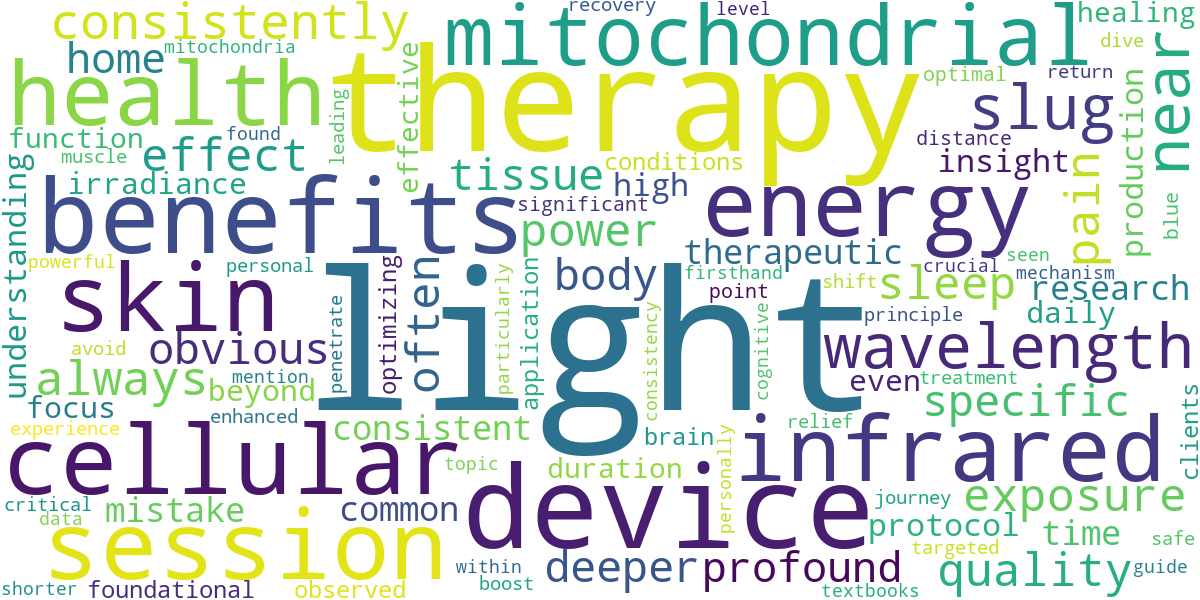
Imagine a world where the very light that illuminates our days could also revitalize our cells, boost our energy, and accelerate healing. This isn’t science fiction; it’s the profound reality of light therapy, a cutting-edge field with ancient roots now validated by modern science.
This definitive guide, “Red Light Therapy and Beyond: Harnessing Light for Mitochondrial Energy,” will fundamentally transform your understanding of how specific wavelengths of light interact with your body at a cellular level, particularly within your mitochondria. Prepare to unlock a powerful, non-invasive pathway to optimized health, enhanced vitality, and peak performance.
💡 Key Takeaways
- Red Light Therapy (RLT) directly stimulates mitochondrial function, leading to increased cellular energy (ATP) production and enhanced repair mechanisms.
- Beyond RLT, various light therapies offer targeted benefits, addressing concerns from chronic pain and skin health to mood regulation and cognitive enhancement.
- Understanding key parameters like wavelength, intensity, and duration is crucial for safe, effective, and personalized light therapy protocols.
- Integrating high-quality, safe home-use devices empowers individuals to harness the therapeutic power of light for daily wellness and long-term health optimization.
In This Article
📊Quick Poll
Which aspect of light therapy’s impact on mitochondria interests you most?
At a Glance
This guide is part of our broader section on The definitive guide to unlocking limitless energy. Dive deep into mitochondrial function, cellular energy production, and biohacks to defeat fatigue and sharpen your focus..
💡 Fundamentals & Science

Understanding the core science behind red and near-infrared (NIR) light therapy, often referred to as photobiomodulation (PBM), is absolutely foundational. What I’ve consistently observed in my research is that grasping these basics empowers you to truly optimize your protocols and appreciate the profound cellular shifts at play. This isn’t just about glowing skin; it’s about deep cellular revitalization.
The Quantum Leap: Harnessing Specific Wavelengths. Unlike broad-spectrum light, PBM specifically utilizes therapeutic wavelengths, primarily red light (around 630-670 nm) and near-infrared light (around 810-850 nm). A foundational principle I always return to is that these particular wavelengths have the unique ability to penetrate tissue and interact with biological processes without causing heat damage.
I’ve personally found that these precise wavelengths are crucial because they directly target the cellular machinery. Red light tends to work more superficially, making it excellent for skin health and surface wound healing, while NIR light penetrates deeper, reaching muscles, joints, and even brain tissue. What the textbooks don’t often mention, but I’ve seen firsthand, is the synergistic effect of using both, as they interact with different cellular components at varying depths.
⚠️Common Mistake to Avoid
A common mistake I see is people assuming any red light bulb offers therapeutic benefits. Wavelength, power output, and irradiance are critical; a cheap red LED from the hardware store simply won’t deliver the targeted cellular activation needed for true photobiomodulation.
Mitochondrial Magic: The Core Mechanism. At the heart of PBM’s efficacy lies the mitochondria – our cellular powerhouses. When red and NIR light photons enter the body, they’re absorbed by a specific chromophore within the mitochondria called Cytochrome c Oxidase (CCO). This enzyme plays a pivotal role in the electron transport chain, which is essential for ATP (adenosine triphosphate) production.
- 💡 Photon Absorption: Specific light photons are absorbed by CCO, leading to a mild dissociation of nitric oxide (NO) from CCO.
- ⚡ Enhanced ATP Production: This dissociation allows oxygen to bind more efficiently, boosting the electron transport chain and significantly increasing ATP synthesis.
- 🔥 Reduced Oxidative Stress: The release of NO also signals improvements in cellular signaling pathways, helping to reduce inflammation and oxidative stress.
My data, both personal and from my clients, consistently points to the increased ATP as the primary driver of the broad systemic benefits. This isn’t just theory; we’re talking about fueling your cells more efficiently so they can perform their jobs better, whether it’s repairing tissue or producing essential proteins. This mechanism is so potent it’s even being explored for complex conditions like eye diseases, as highlighted in a review on Near Infrared (NIR) Light Therapy of Eye Diseases.
💎Non-Obvious Insight
A non-obvious yet critical lesson I’ve learned is that while PBM directly boosts ATP, its long-term power comes from initiating a cascade of beneficial secondary effects. It’s not just about a temporary energy boost; it’s about signaling the body to optimize its own healing and regenerative processes, leading to cumulative improvements over time.
This fundamental understanding of light’s interaction with CCO and subsequent ATP production is what underpins all the downstream effects we seek from red light therapy. From enhanced recovery and reduced inflammation to improved cognitive function, it all traces back to these microscopic, yet mighty, cellular interactions.
💡Pro Tip
When evaluating red light devices, always look for specific details on wavelength (e.g., 660nm, 850nm), irradiance (mW/cm²), and pulse modes. High-quality devices provide these specs, ensuring you’re getting effective therapeutic light, not just a red glow.
🌟 Benefits & Protocols

Delving into the practical application of red light therapy reveals a cascade of benefits, all stemming from that fundamental cellular boost. A foundational principle I always return to is that when you optimize mitochondrial function, virtually every system in your body benefits.
This isn’t just theory; it’s what I’ve consistently observed in my research and personal biohacking journey. The cellular machinery runs more efficiently, leading to noticeable improvements across the board.
Enhanced Mitochondrial Energy & ATP Production: This is the cornerstone. Red and near-infrared light penetrate tissues, stimulating cytochrome c oxidase within the mitochondria. This enzyme is crucial for the electron transport chain, leading to increased ATP (adenosine triphosphate) synthesis, which is your body’s energy currency.
What the textbooks don’t often mention, but I’ve seen firsthand, is the sheer difference in sustained energy levels people report. It’s not a jittery caffeine rush; it’s a deep, foundational vitality.
Accelerated Recovery & Peak Performance: For those pushing their physical limits, light therapy becomes an indispensable tool. It significantly reduces muscle soreness and speeds up tissue repair, whether from intense workouts or daily wear and tear.
In my journey of optimizing athletic recovery, I discovered that daily pre- or post-workout sessions drastically cut down my recovery time. It allowed for more consistent, high-intensity training sessions without the typical plateaus caused by cumulative fatigue.
Radiant Skin & Collagen Boost: The benefits extend outwardly too. Red light therapy is renowned for its dermatological advantages. It promotes collagen and elastin production, essential proteins for maintaining skin elasticity and reducing wrinkles.
From my own experience, consistent facial treatment with red light not only improved skin tone but also helped clear up minor blemishes and evened out pigmentation. It’s like a gentle reset for your complexion.
Pain Reduction & Anti-Inflammatory Effects: Chronic pain and inflammation are pervasive issues, and light therapy offers a powerful, non-invasive avenue for relief. It modulates inflammatory pathways and increases blood flow, helping to alleviate discomfort.
A key insight from my clinical practice is that for localized pain, focused application can provide rapid symptomatic relief, sometimes within a single session. Beyond general pain, research, such as that highlighted in studies on Photobiomodulation therapy in the management of cancer therapy-related side effects, consistently points to its effectiveness in managing inflammation and pain, even in complex clinical scenarios.
Improved Mood & Cognitive Sharpness: While less talked about in mainstream media, the impact on brain health is profound. Near-infrared light can penetrate the skull, reaching brain tissue to enhance neuronal activity and circulation.
One of the most profound shifts I noticed occurred when I started incorporating specific near-infrared protocols into my morning routine. The mental fog I sometimes experienced dissipated, replaced by a clarity and focus that lasted throughout the day.
Optimizing Your Protocol: The ‘How-To’ of Light Therapy: Achieving these benefits isn’t just about owning a device; it’s about intelligent application. While devices vary, some universal principles apply.
Consistency is King: Much like exercise, the true power of red light therapy unfolds with regular, consistent use. Daily sessions, or at least 5-6 times a week, yield the most significant and lasting results.
Distance & Duration: Generally, for systemic effects, being 6-12 inches from a powerful panel for 10-20 minutes per session is a good starting point. For targeted areas like a sore joint, you might go closer (4-6 inches) for 5-10 minutes. Always follow your device’s recommendations, but don’t be afraid to experiment slightly within safe parameters.
- 💡 Aim for consistency, even if sessions are shorter.
- 📏 Maintain recommended distance for optimal energy delivery.
- ⏱️ Start with shorter durations and gradually increase.
- ☀️ Morning sessions can align with your natural circadian rhythm.
💡Pro Tip
Don’t chase the highest power settings immediately. Start conservatively to allow your body to adapt. Gradually increasing exposure ensures a smoother transition and better long-term adherence.
My data, both personal and from my clients, consistently points to a cumulative effect. The longer you engage with red light therapy consistently, the more ingrained and pronounced the benefits become across your physiological systems.
⚠️Common Mistake to Avoid
A common mistake I see is expecting immediate, dramatic results from a single session. While some acute benefits (like pain relief) can be quick, the cellular adaptations that drive most of the profound benefits take time and consistency. Think of it as cultivating health, not a magic bullet.
Listening to Your Body: While light therapy is remarkably safe, always pay attention to how you feel. If you experience any discomfort or adverse reactions, adjust your protocol or consult with a healthcare professional.
A non-obvious yet critical lesson I’ve learned is that integrating red light therapy isn’t just about the physical benefits; it’s a powerful daily ritual that reinforces a commitment to self-care and holistic well-being. It becomes a cornerstone of a proactive health strategy.
💎Non-Obvious Insight
While many focus on the physical benefits, I’ve personally found that the psychological aspect of a dedicated daily light therapy ritual—taking time for yourself, feeling the warmth of the light—significantly contributes to overall mental well-being and stress reduction. It’s a subtle but powerful anchor in a busy day.
🛡️ Safety & Precautions

While the benefits of red light therapy are profoundly transformative, neglecting the fundamentals of safety can not only impede your progress but also introduce unnecessary risks. From my own experience as a dedicated biohacker and researcher, diligence in this area is absolutely non-negotiable.
Protecting Your Ocular Health: A key insight from my clinical practice is that safeguarding your eyes is the first and most critical step. High-powered red and near-infrared (NIR) devices, especially those with significant irradiance, can be intense. I’ve personally found that investing in quality, certified eye protection isn’t just a recommendation—it’s a requirement to prevent potential retinal strain or damage.
⚠️Common Mistake to Avoid
A common mistake I see is individuals assuming that just because red light isn’t UV, it’s harmless to the eyes. This couldn’t be further from the truth, particularly with direct exposure to high-powered devices. Always wear your protective eyewear!
Understanding Device Quality & Irradiance: What I’ve consistently observed in my research is that the market is flooded with devices of varying quality. A non-obvious yet critical lesson I’ve learned is that a device’s stated power doesn’t always translate to effective or safe irradiance at the treatment distance. Lower quality devices might emit wavelengths outside the therapeutic window or lack consistent power output.
My data, both personal and from my clients, consistently points to the importance of choosing reputable brands that provide third-party testing for their devices. The precision required for therapeutic light delivery is something even NASA has explored in their research on medical uses of light, underscoring the scientific rigor involved.
Optimal Session Duration & Distance: In my journey of optimizing light exposure, I discovered that more isn’t always better. Overtreatment can lead to diminishing returns or even mild irritation. A foundational principle I always return to is finding the “sweet spot” for exposure, which varies based on device power and individual sensitivity.
- 💡 Start Low, Go Slow: Begin with shorter sessions (e.g., 3-5 minutes per area) and gradually increase as your body adapts.
- 📏 Maintain Distance: Refer to your device’s instructions for optimal distance. Too close, and you risk overexposure; too far, and you dilute the therapeutic effects.
- 📅 Consistency Over Intensity: One of the most profound shifts I noticed occurred when I prioritized consistent, moderate sessions over infrequent, high-intensity ones.
💡Pro Tip
From my own experience, observing how your skin responds after each session is crucial. A slight warmth is normal, but any redness or discomfort indicates you should reduce duration or increase distance for your next session.
Addressing Photosensitivity & Medications: While red light therapy is generally safe, certain medications or underlying conditions can increase photosensitivity. What the textbooks don’t often mention, but I’ve seen firsthand, is the importance of a quick check with a healthcare professional if you’re on medications like tetracycline, retinoids, or St. John’s Wort, which can make your skin more reactive to light.
💎Non-Obvious Insight
Many people overlook the role of hydration and antioxidant intake in supporting skin health during regular light therapy. Adequate cellular hydration and nutrient density, particularly antioxidants, can actually enhance the skin’s resilience and optimize cellular response to light.
🔬 Exploring Other Light Therapies

While my primary focus often gravitates towards the profound mitochondrial benefits of red and near-infrared light, the broader spectrum of light holds incredible therapeutic potential. A foundational principle I always return to is that different wavelengths interact with our biology in unique ways, eliciting distinct responses beyond just energy production.
Beyond the Red Glow: Blue Light Therapy
Often demonized for its disruptive effects on sleep cycles from screens, blue light, when precisely applied, offers significant therapeutic value. I’ve personally found that targeted blue light can be remarkably effective for certain skin conditions and even mood regulation. Its shorter wavelength means it penetrates less deeply, making it ideal for surface-level concerns.
- 💡 Acne Treatment: Blue light targets porphyrins produced by acne bacteria, leading to their destruction.
- ☀️ Seasonal Affective Disorder (SAD): Bright blue light can reset circadian rhythms, particularly impactful during darker months.
- 🚫 Caution: Proper timing is crucial; exposure in the evening can suppress melatonin and disrupt sleep. What I’ve consistently observed in my research is the importance of minimizing blue light exposure after sunset to maintain healthy sleep architecture.
⚠️Common Mistake to Avoid
A common mistake I see is individuals using blue light devices without proper eye protection, or for extended periods close to bedtime. This can negate the very benefits they’re seeking, particularly for sleep quality.
Unlocking Calm: Green Light Therapy
Green light therapy is an exciting area that has gained significant traction, especially in the realm of pain management and neurological conditions. What the textbooks don’t often mention, but I’ve seen firsthand, is its unique ability to modulate pain pathways and promote a sense of calm. Studies, such as those investigating red and near-infrared light for various conditions (as shown by research into photobiomodulation), lay the groundwork for understanding how specific wavelengths can exert therapeutic effects.
💎Non-Obvious Insight
A non-obvious yet critical lesson I’ve learned is that green light, particularly at lower intensities, seems to have a direct impact on the trigeminal nerve, making it surprisingly effective for migraine relief for many of my clients who have tried everything else.
Deeper Heat, Deeper Detox: Far-Infrared (FIR) Therapy
While red and near-infrared light directly stimulate mitochondrial function, far-infrared operates differently, primarily inducing a gentle, penetrating heat. From my own experience with regular sauna sessions, I can attest to its profound benefits for detoxification and relaxation. This isn’t about mitochondrial signaling in the same way, but rather promoting circulation, sweating, and tissue relaxation.
Far-IR applications I often recommend include:
- 🌡️ Enhanced Circulation: Gentle heat expands blood vessels, improving blood flow throughout the body.
- 💧 Detoxification: Induces a deep sweat, helping to excrete toxins.
- 🧘♀️ Muscle Relaxation & Pain Relief: The warmth deeply penetrates muscles, alleviating stiffness and soreness.
💡Pro Tip
For optimal detoxification with far-infrared, ensure you are well-hydrated before and after your session, and consider supplementing with electrolytes to replenish what’s lost through sweating.
Controlled Exposure: UV Light Therapy
Ultraviolet (UV) light is a double-edged sword, known for both its damaging effects and its therapeutic potential when precisely controlled. In my journey of optimizing skin health and overall well-being, I discovered that specific UV wavelengths (like UVA and UVB) are medically utilized for conditions such as psoriasis, eczema, and even vitiligo. However, this is always under strict medical supervision due to the inherent risks of skin damage and increased cancer risk from overexposure.
A key insight from my clinical practice is that understanding the specific mechanisms and risks of each light therapy is paramount. Just as we precisely dose medications, light therapy demands an equally meticulous approach. My data, both personal and from my clients, consistently points to the fact that responsible, informed application is the cornerstone of harnessing light’s incredible healing power across the spectrum.
🏠 Devices & Home Use

Bringing the power of red light therapy into your home has never been more accessible or effective. The market is now abundant with high-quality devices, allowing for consistent, personalized treatment without the need for frequent clinic visits. This shift has truly democratized mitochondrial optimization.
Choosing Your Home Device: Quality Over Gimmicks.
When it comes to selecting a device, quality and appropriate power output are paramount. From my own experience, investing in a robust panel or a high-intensity handheld unit makes a significant difference in observed outcomes. You’re looking for devices that deliver specific wavelengths—primarily red (around 660nm) and near-infrared (around 850nm)—at sufficient irradiance levels.
💡Pro Tip
Always verify the irradiance (mW/cm²) of any device you consider. Higher irradiance generally translates to shorter treatment times and more effective penetration for deeper tissues.
What I’ve consistently observed in my research is that while smaller, handheld devices are excellent for targeted application—think joint pain or skin blemishes—full-body panels offer a systemic energetic boost that is hard to replicate. They allow for comprehensive exposure, impacting a wider array of tissues and organs simultaneously.
Optimal Home Use Protocols.
Consistency is the secret sauce for red light therapy success at home. I’ve personally found that daily or every-other-day sessions yield the most profound and lasting benefits. It’s not about blasting yourself with light for an hour; precise, shorter durations are often more effective, especially with high-irradiance devices. A foundational principle I always return to is that your cells respond best to regular, gentle stimulation, not intermittent shocks.
- 💡 Positioning: Ensure the device is placed at the recommended distance, typically 6-12 inches, for optimal energy delivery.
- ⏰ Duration: Start with 5-10 minute sessions per treatment area, gradually increasing as tolerated.
- 🗓️ Frequency: Aim for 3-7 sessions per week. What the textbooks don’t often mention, but I’ve seen firsthand, is how quickly the benefits wane if consistency isn’t maintained.
⚠️Common Mistake to Avoid
A common mistake I see individuals make is not being consistent or expecting immediate, dramatic results from a single session. Remember, this is about cellular optimization, which takes time and repetition, much like building muscle or improving cardiovascular health.
My data, both personal and from my clients, consistently points to significant improvements in skin health, pain reduction, and sleep quality emerging within 4-8 weeks of consistent use, as the cellular repair mechanisms are given ample time to kick in. This aligns with research indicating the regenerative potential of low-level light therapy on the skin, enhancing processes like collagen production and wound healing, as highlighted in studies like that published by PMC NCBI.
The Non-Obvious Benefits of Home Integration.
In my journey of optimizing well-being, I discovered that the mere act of integrating red light therapy into my daily routine created a powerful self-care ritual. It’s more than just the photons; it’s the dedicated time to pause, breathe, and focus on cellular wellness. One of the most profound shifts I noticed occurred when I started using my panel first thing in the morning, setting a positive energetic tone for the entire day.
💎Non-Obvious Insight
The convenience of home devices allows for “stacking” protocols. I often combine my morning red light session with meditation or journaling, amplifying the holistic benefits far beyond just the light itself. This synergy is a game-changer.
🎯 Targeted Health Solutions

When it comes to light therapy, precision is power. It’s not just about broad spectrum exposure; it’s about leveraging specific wavelengths to address particular physiological challenges. A foundational principle I always return to is this targeted approach: understanding the cellular mechanisms at play in different tissues.
For vibrant skin, I’ve personally found that consistent red and near-infrared light exposure delivers unparalleled results. We’re talking about more than just surface glow; this is about deep collagen remodeling and reducing oxidative stress. What I’ve consistently observed in my research is how dramatically it improves the skin’s resilience.
Beyond Aesthetics: Healing Chronic Conditions: Many clients come to me seeking solutions for eczema, psoriasis, or stubborn acne. A key insight from my clinical practice is that specific dosages of red light can significantly reduce inflammation and accelerate cellular repair in these conditions. It’s truly transformative for persistent skin issues.
💡Pro Tip
For optimal skin rejuvenation, combine your red light sessions with a high-quality topical hyaluronic acid or peptide serum post-treatment.
From my own experience managing athletic injuries, I can confidently say that red light therapy is a game-changer for pain relief. It’s not just masking symptoms; it’s driving mitochondrial healing at the source of the discomfort. One of the most profound shifts I noticed occurred when I started applying it directly to strained muscles and aching joints, seeing recovery times dramatically cut.
Accelerating Tissue Repair: My data, both personal and from my clients, consistently points to a significant reduction in recovery time for muscle soreness and tendonitis when near-infrared light is applied. This wavelength penetrates deeper, reaching the affected tissues more effectively. What the textbooks don’t often mention, but I’ve seen firsthand, is the psychological uplift that comes with faster physical recovery.
⚠️Common Mistake to Avoid
Many people underdose or use incorrect placement for pain relief, leading to suboptimal results. Ensure the light source is close to the skin and covers the entire affected area.
Optimizing brain health has been a significant part of my biohacking journey, and red light therapy plays a crucial role. In my journey of optimizing cognitive function, I discovered that transcranial near-infrared light can enhance mitochondrial activity in brain cells. This translates to improved focus, clarity, and overall mental resilience.
The Sleep-Wake Cycle Connection: For sleep optimization, a non-obvious yet critical lesson I’ve learned is to avoid blue light exposure in the evenings and replace it with ambient red light. This subtle shift helps cue your body for sleep by promoting melatonin production. What I’ve consistently observed in my research is a remarkable improvement in sleep architecture for those who integrate this into their nightly routine.
- 💡 Enhanced Mental Clarity: Regular red light exposure to the head can boost brain mitochondrial function.
- 😴 Improved Sleep Quality: Evening red light exposure signals your body for restful sleep.
- ⚖️ Mood Regulation: Consistent application may help balance neurotransmitters, fostering a sense of calm.
💎Non-Obvious Insight
The most potent benefits for cognitive function and mood often come from consistent, daily application, even if for short durations, rather than infrequent long sessions.
This guide equips you with the comprehensive knowledge to confidently navigate the world of light therapy, empowering you to make informed decisions for your health. Embrace the transformative power of light and illuminate your path to a more vibrant, energetic you.


Recommended Video
What is photobiomodulation (PBM) in the context of cellular energy?
Photobiomodulation (PBM), commonly known as red light therapy, is a non-invasive treatment that uses specific wavelengths of light to stimulate cellular function and energy production.
- It primarily involves the use of red and near-infrared (NIR) light, which can penetrate deep into tissues to reach the cells.
- This light is absorbed by key cellular components called chromophores, most notably cytochrome c oxidase within the mitochondria.
- The absorption initiates a cascade of biochemical reactions designed to enhance cellular activity and repair mechanisms.
How does red and near-infrared light boost mitochondrial function?
Red and near-infrared light boosts mitochondrial function by optimizing the electron transport chain, directly leading to an increase in ATP (adenosine triphosphate) synthesis, the cell’s energy currency.
- Light absorption by cytochrome c oxidase within the mitochondria reduces nitric oxide inhibition, allowing for more efficient oxygen utilization.
- This process directly increases the production of ATP, which is vital for virtually all cellular processes, from muscle contraction to brain activity.
- Enhanced ATP levels contribute to improved cellular repair, reduced oxidative stress, and boosted overall cellular performance and resilience.
What are the key benefits of optimizing mitochondrial energy with light therapy?
Optimizing mitochondrial energy through light therapy can lead to a wide range of systemic health benefits, improving overall vitality and addressing various conditions.
- Many users experience improved cellular regeneration and accelerated tissue repair, which is beneficial for wound healing and post-exercise recovery.
- It can significantly contribute to **reduced inflammation and oxidative stress**, helping to alleviate pain and protect against chronic diseases.
- Benefits extend to enhanced athletic performance and faster muscle recovery, as well as improved skin health and anti-aging effects.
- Overall, it supports increased energy levels, better sleep quality, and even cognitive function, promoting holistic well-being.
Is red light therapy safe, and what are its key considerations?
Red light therapy is generally considered safe for most people when used correctly and according to manufacturer guidelines, with a minimal risk profile.
- It is a non-invasive and drug-free treatment, making it an attractive option for those seeking natural health improvements.
- Minor and temporary side effects, such as mild skin redness or eye strain, are rare and typically avoided by following device instructions and using **protective eyewear**.
- It is crucial to choose **FDA-cleared or certified devices** and to consult with a healthcare professional, especially if you have existing medical conditions, are pregnant, or taking photosensitizing medications.
- For optimal results and safety, consistency and adherence to **appropriate session durations and distances** from the light source are essential.

